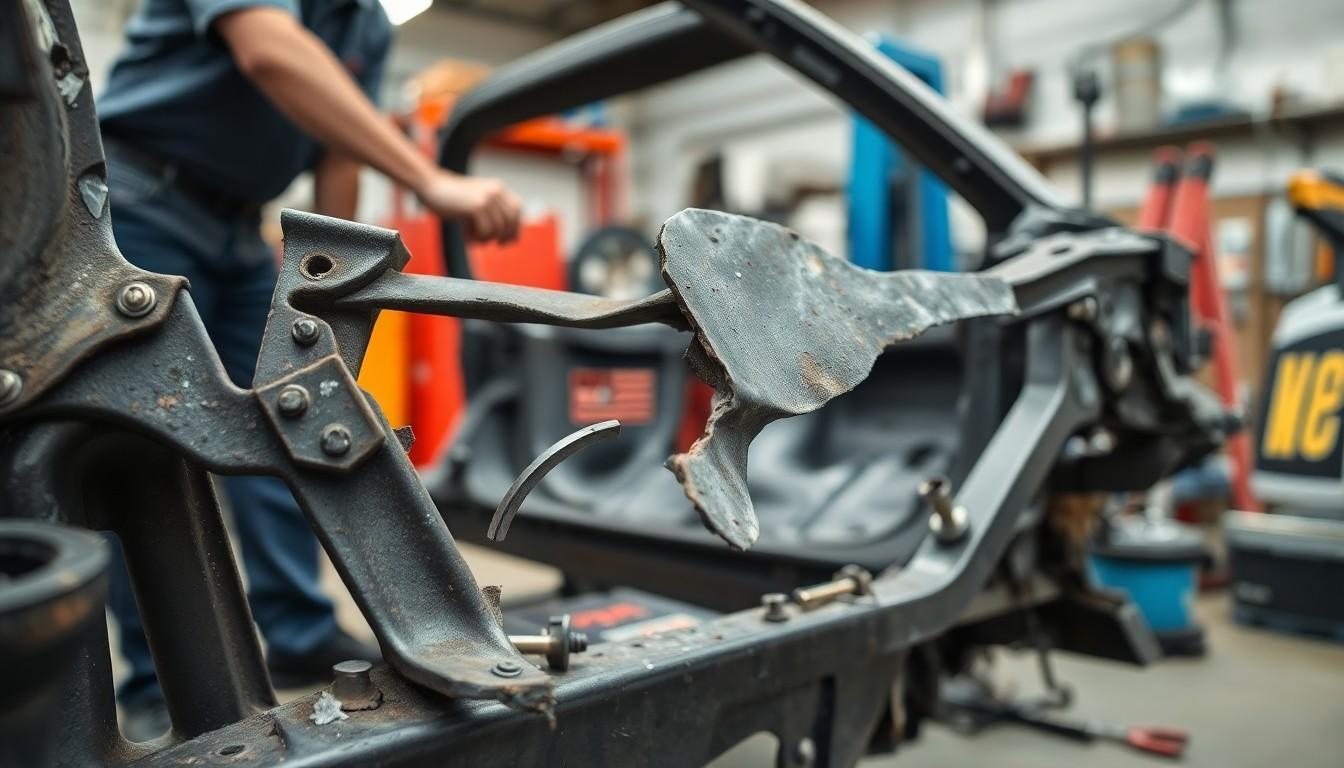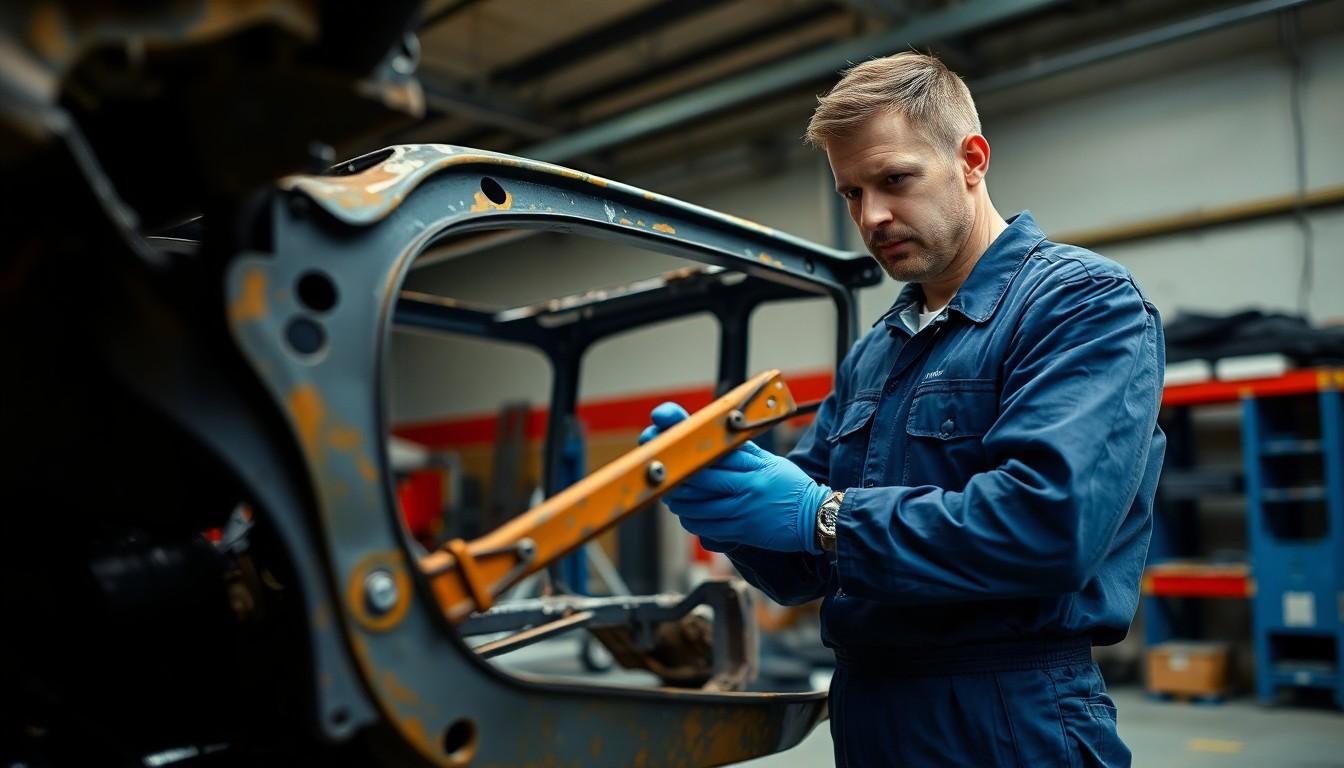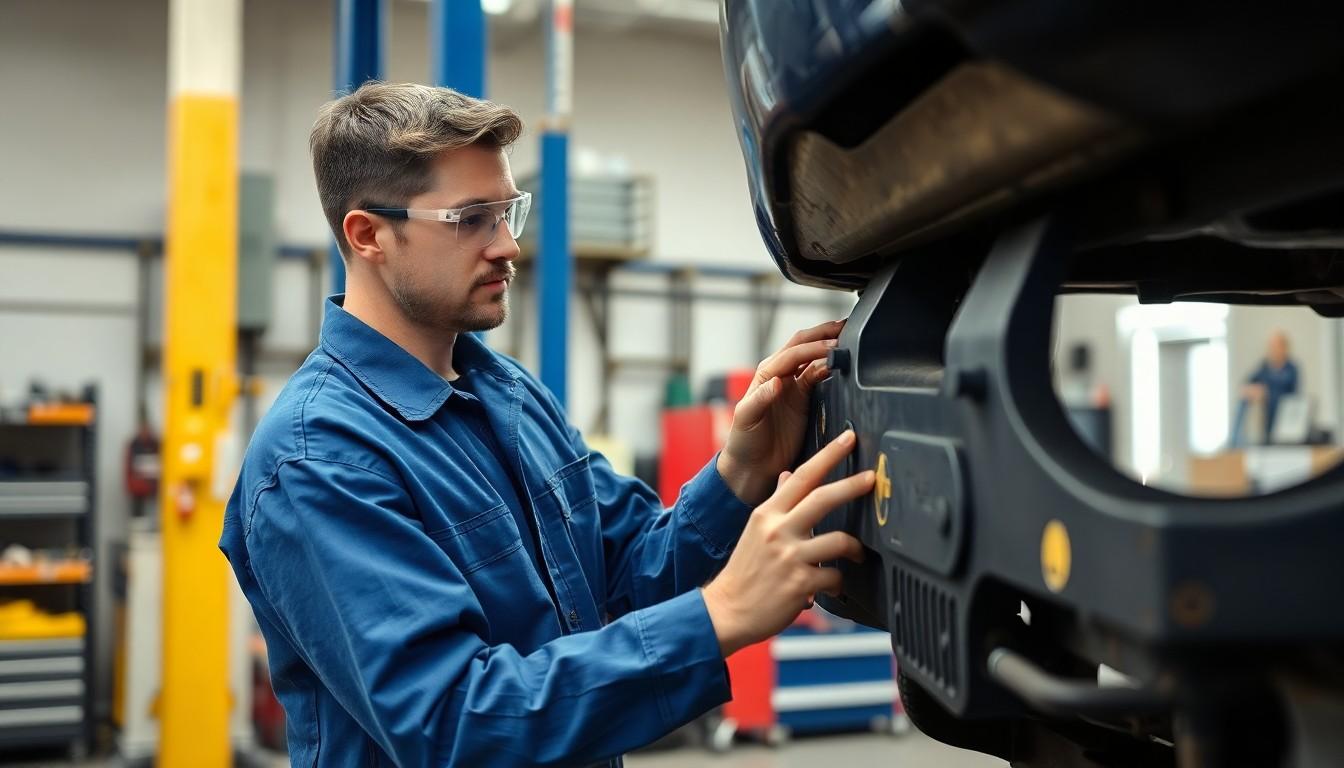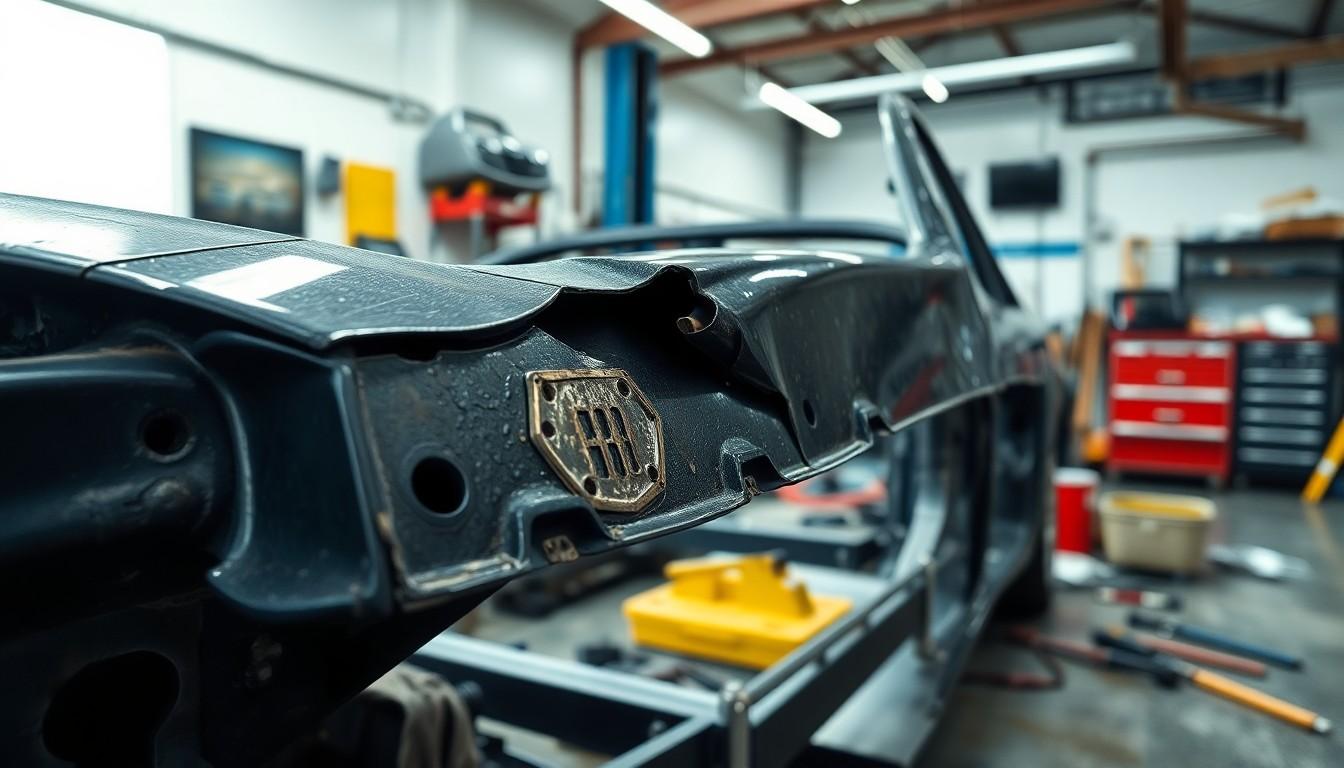When a car suffers frame damage after an accident, many vehicle owners wonder if their beloved ride is destined for the scrapyard. It’s a legitimate concern—after all, the frame is essentially your car’s skeleton, providing structural integrity and protection.
We’ve helped countless drivers navigate this confusing situation, and we’ll share what you need to know about frame damage and vehicle totaling. While severe frame damage often leads insurance companies to declare a car “totaled,” the reality isn’t always so black and white. Several factors—including the extent of damage, repair costs versus vehicle value, and your state’s exact regulations—all play crucial roles in this determination.
Understanding Frame Damage in Vehicles
Frame damage represents one of the most critical structural issues a vehicle can experience. Vehicle frames serve as the foundational skeleton that supports all other components, providing crucial protection during accidents. Frame damage occurs when this essential structure becomes bent, cracked, or otherwise compromised, typically resulting from important impacts like collisions or severe accidents.
A car’s frame consists of specialized steel or aluminum components designed to absorb and distribute impact forces. Modern vehicles feature either unibody construction (where the frame and body form one integrated unit) or body-on-frame design (commonly found in trucks and larger SUVs). The integrity of these structures directly impacts occupant safety, vehicle handling, and overall functionality.
Signs of frame damage often include visible bending, cracking, or twisting of the frame rails. Additional indicators include doors that don’t close properly, uneven tire wear, and abnormal vehicle alignment issues. Vehicles with damaged frames typically demonstrate unusual driving characteristics such as pulling to one side or exhibiting strange noises during operation.
Technicians classify frame damage into three primary categories based on severity:
- Minor frame damage: Small bends or minor misalignments that don’t compromise structural integrity
- Moderate frame damage: Important bends requiring professional repair but generally fixable
- Severe frame damage: Extensive structural compromise that may render the vehicle unsafe to drive
Professional assessment of frame damage requires specialized equipment like frame measuring systems and alignment tools. Modern repair facilities use computer-assisted measuring devices to identify even slight deviations from manufacturer specifications. This technology allows for precise diagnosis of frame issues that might otherwise remain undetected during visual inspections.
Types of Frame Damage and Their Severity

Frame damage varies significantly in severity and repair complexity, directly influencing whether your vehicle gets totaled. Understanding the different types of frame damage helps you assess the situation more accurately when dealing with insurance claims.
Bent Frames
Bent frames represent one of the more common types of frame damage and aren’t always a death sentence for your vehicle. Repair possibilities exist especially when the bending isn’t extensive, though costs can escalate quickly due to the complex repair process. Insurance companies typically consider a vehicle totaled if repair costs exceed 60-70% of the car’s value. Modern vehicles with unibody construction present additional challenges since the frame and body function as an integrated unit, making repairs more technical and expensive.
Cracked or Broken Frames
Cracked or broken frames present more serious structural concerns and frequently lead to total loss declarations. These damages compromise the vehicle’s fundamental integrity, creating important safety risks even after attempted repairs. Insurance adjusters carefully calculate the vehicle’s actual cash value against the combined cost of repairs and salvage value when making totaling decisions. When cracks appear in critical load-bearing sections of the frame, the repair costs often push beyond the economic threshold for salvageability, resulting in the car being deemed a total loss.
Twisted Frames
Twisted frames indicate severe structural damage and typically result in total loss declarations due to their extensive repair requirements. This type of damage affects multiple vehicle systems simultaneously, including alignment, suspension components, and overall safety characteristics. The intricate nature of correcting a twisted frame, particularly in unibody designs, makes repairs economically impractical in most cases. Even when technically repairable, vehicles with previously twisted frames often suffer from permanent diminished value and may develop ongoing mechanical issues that compromise both safety and performance.
When Frame Damage Results in a Total Loss

Frame damage doesn’t automatically mean your car is totaled, but several critical factors determine this outcome. The severity of damage, type of frame construction, and financial considerations all play important roles in this determination.
Insurance Companies’ Assessment Criteria
Insurance companies follow exact guidelines when evaluating frame-damaged vehicles. These companies typically use a total loss threshold that varies by state, with most ranging between 60-70% of the vehicle’s value. For example, if your car is worth $10,000 and repairs would cost $7,000, it’s likely to be declared a total loss. The assessment often includes an independent third-party appraisal to provide an unbiased evaluation of the vehicle’s condition and repairability. This evaluation considers both the technical feasibility of repairs and their economic viability compared to the car’s pre-accident value.
Cost of Repairs vs. Vehicle Value
The financial equation lies at the heart of total loss determinations for frame-damaged vehicles. Insurance companies calculate the actual cash value (ACV) of your vehicle and compare it to the combined cost of repairs plus the vehicle’s salvage value. Cars with repair costs exceeding 60-70% of their value are commonly declared total losses even if repairs are technically possible. Salvage value significantly impacts this calculation—if your vehicle has a pre-accident value of $15,000, repair costs of $9,000, and a salvage value of $3,000, the combined cost ($12,000) creates an economic tipping point that might trigger a total loss declaration. The frame type also affects repair costs, with unibody construction (used in most modern vehicles) typically requiring more complex and expensive repairs than traditional body-on-frame designs.
Repairable Frame Damage Scenarios

Frame damage doesn’t automatically mean your vehicle is destined for the scrap yard. Several scenarios exist where frame damage can be successfully repaired, depending on exact factors like the type of vehicle construction and extent of damage.
Minor Frame Damage
Minor frame damage encompasses small cracks, slight bends, or non-structural issues that don’t significantly compromise your vehicle’s safety or performance. These issues often respond well to professional repair techniques using specialized equipment. The decision between repair and total loss still depends on a cost calculation comparing repair expenses to your vehicle’s pre-accident value. Insurance companies typically consider repairs economically viable when costs remain below 60-70% of the vehicle’s value. Even seemingly minor frame damage requires professional assessment to ensure all problems are identified and properly addressed.
Modern Frame Repair Technologies
Advanced technologies have revolutionized frame repair capabilities in recent years. Computer-aided measurement systems now enable technicians to precisely evaluate frame alignment down to the millimeter, ensuring accurate repairs that restore manufacturer specifications. Specialized welding and straightening equipment allows repair shops to address frame damage that would have previously resulted in a total loss declaration. Modern collision repair facilities use dedicated software programs that compare measurements against factory specifications to confirm proper structural restoration. These technological advances have expanded repair possibilities, though economic considerations still determine whether repairs are justified compared to the vehicle’s market value.
Safety Concerns with Repaired Frame Damage

Immediate Safety Risks
Driving a car with frame damage creates important safety hazards, even when the damage appears minor. Compromised structural integrity affects how the vehicle handles impacts and distributes forces during accidents. The interconnected nature of modern vehicle design means that frame damage undermines the entire safety system. According to safety experts, frame damage can compromise crucial safety features like crumple zones and airbag deployment timing, leaving occupants more vulnerable during subsequent collisions.
Long-term Consequences
Frame damage progressively worsens over time if not properly addressed. Unrepaired or inadequately fixed frame issues place additional stress on interconnected vehicle components, particularly in unibody constructions where each element plays a structural role. This stress can lead to premature wear of suspension components, steering mechanisms, and drivetrain parts. Cars with compromised frames may develop unpredictable handling characteristics, excessive tire wear, and alignment problems that persist even though repeated adjustments.
Repair Quality
The expertise of the repair facility directly impacts the safety of a frame-repaired vehicle. Professional shops with specialized frame-straightening equipment, manufacturer-exact repair procedures, and certified technicians provide significantly safer repairs than general repair facilities. Frame repair requires precise measurements and specialized techniques to restore the vehicle to factory specifications. Improper repairs can leave hidden weaknesses that might not be immediately apparent but could catastrophically fail during a subsequent collision, putting occupants at serious risk.
Impact on Vehicle Value and History Reports

Frame damage delivers a important blow to a vehicle’s value, ranking among the most serious issues a car can face. The structural integrity weakening affects safety and dramatically reduces resale value. Insurance companies view frame damage as a major red flag, resulting in lower settlement offers or increased insurance rates, sometimes even leading to coverage denial.
Repair costs often determine whether a vehicle becomes a total loss. When frame repair expenses exceed the vehicle’s actual cash value, insurance companies typically declare it a total loss. This determination follows a straightforward calculation: if the salvage value plus repair costs surpasses the pre-accident value, the vehicle is totaled.
Vehicle history reports permanently document frame damage through services like Carfax and AutoCheck. This documented history follows the vehicle throughout its remaining life, making it substantially harder to sell. Potential buyers immediately recognize the significance of frame damage in a vehicle’s history and typically offer much less than for comparable undamaged vehicles.
The severity of frame damage plays a crucial role in determining outcomes. Minor damage might be repairable, whereas severe damage such as a bent frame typically results in a total loss declaration. Insurance adjusters carefully evaluate both the extent of damage and the associated repair costs when making their assessment.
Frame damage affects vehicles differently based on their construction. Unibody designs, common in most modern vehicles, often face more complex and costly repairs than traditional body-on-frame vehicles found in trucks and some SUVs. This difference in construction directly impacts repair feasibility and total loss determinations.
Conclusion
Frame damage doesn’t automatically mean your car is totaled but it’s a important factor in the decision-making process. Insurance companies weigh the severity of frame damage against repair costs and your vehicle’s actual cash value to determine if it’s economically viable to fix.
Remember that safety should be your primary concern. Even if repairs are possible driving a compromised vehicle puts you and others at risk. When facing frame damage seek professional assessment immediately from qualified repair facilities.
The impact extends beyond immediate repairs affecting your vehicle’s long-term value resale potential and insurance considerations. Whether your car is eventually totaled depends on damage severity vehicle construction type and your state’s exact total loss threshold regulations.
Frequently Asked Questions
Is a car with frame damage automatically considered totaled?
No, frame damage doesn’t automatically mean your car is totaled. The determination depends on several factors including damage severity, repair costs relative to the vehicle’s value, and state-specific regulations. Insurance companies typically declare a vehicle totaled when repair costs reach 60-70% of its market value. Minor frame damage can often be repaired successfully.
How can I tell if my car has frame damage?
Signs of frame damage include visible bending or warping, doors that don’t close properly, uneven tire wear, misaligned panels with unusual gaps, and handling issues like pulling to one side while driving. Serious frame damage might cause the vehicle to sit unevenly. However, some frame damage requires professional inspection with specialized equipment to detect.
What are the different levels of frame damage?
Frame damage typically falls into three categories: minor (small cracks or slight bends that don’t compromise safety), moderate (more significant bends requiring professional repair but still salvageable), and severe (major structural compromise including breaks or twisting that often leads to total loss). The severity level directly impacts repair feasibility and costs.
Is it safe to drive a car with frame damage?
No, driving with frame damage is unsafe, even if the damage appears minor. Compromised structural integrity affects vehicle handling, crash protection systems, and safety features like crumple zones and airbag deployment. Frame damage can create unpredictable behavior during accidents and compromise the vehicle’s ability to protect occupants.
How much does frame damage affect a car’s value?
Frame damage significantly reduces a car’s value, typically by 30% or more depending on severity. Even after professional repairs, the vehicle will have a documented history of structural damage that permanently affects its resale value. Vehicle history reports will flag the frame damage, making the car less desirable to future buyers.
What’s the difference between repairing unibody vs. body-on-frame damage?
Unibody repairs are generally more complex and expensive as the entire structure functions as both frame and body, requiring precise measurement and specialized equipment. Body-on-frame vehicles (typically trucks and SUVs) may be more straightforward to repair since the frame is separate from the body, potentially allowing for easier component replacement.
Will insurance cover frame damage repairs?
Yes, insurance typically covers frame damage repairs if you have collision or comprehensive coverage. However, if repair costs approach or exceed the vehicle’s value threshold (usually 60-70%), the insurer will likely declare it a total loss instead of authorizing repairs. Coverage depends on your specific policy and the accident circumstances.
Can frame damage be completely fixed?
Minor to moderate frame damage can often be successfully repaired using modern technology like computer-aided measurement systems and specialized hydraulic equipment. However, severe damage may never restore the vehicle to its pre-accident structural integrity, even with professional repairs. The quality of repairs significantly impacts safety and longevity.

